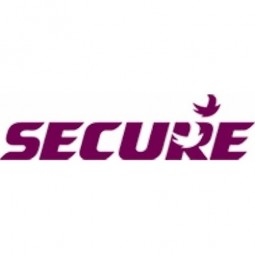下载PDF
Energy Management System at Sugar Industry

技术
- 平台即服务 (PaaS) - 数据管理平台
- 传感器 - 电表
适用行业
- 食品与饮料
适用功能
- 设施管理
用例
- 建筑能源管理
挑战
该公司希望使用系统中的信息来申请可再生能源证书计划。可再生能源证书为公司带来的收益为每年 7500 万卢比。为了实现上述目标,需要一个端到端的解决方案,用于负载监控、消耗监控、在线数据监控、自动仪表数据采集,可以导出到 SAP 和其他应用程序。
客户
未公开
关于客户
印度一家日破碎能力为12000吨的食糖生产商
解决方案
该系统包括 1) 带有 Modbus 端口的 0.2 级 HT 仪表,用于子计量应用和 2) 带有用于在线监控目的的服务器的能源数据监控软件。该解决方案的目的是为公用事业和行业提供可靠和准确的数据。业界可以使用精度为 0.2 级并支持 Modbus 的 HT 仪表监控各种馈线的内部消耗。这些仪表具有在线数据监控功能,可帮助行业监控瞬时能量参数以及 1 分钟的轮询频率。
收集的数据
Energy Consumption Rate, Auxiliary Consumption, Fuel Consumption
运营影响
数量效益
相关案例.

Case Study
The Kellogg Company
Kellogg keeps a close eye on its trade spend, analyzing large volumes of data and running complex simulations to predict which promotional activities will be the most effective. Kellogg needed to decrease the trade spend but its traditional relational database on premises could not keep up with the pace of demand.

Case Study
HEINEKEN Uses the Cloud to Reach 10.5 Million Consumers
For 2012 campaign, the Bond promotion, it planned to launch the campaign at the same time everywhere on the planet. That created unprecedented challenges for HEINEKEN—nowhere more so than in its technology operation. The primary digital content for the campaign was a 100-megabyte movie that had to play flawlessly for millions of viewers worldwide. After all, Bond never fails. No one was going to tolerate a technology failure that might bruise his brand.Previously, HEINEKEN had supported digital media at its outsourced datacenter. But that datacenter lacked the computing resources HEINEKEN needed, and building them—especially to support peak traffic that would total millions of simultaneous hits—would have been both time-consuming and expensive. Nor would it have provided the geographic reach that HEINEKEN needed to minimize latency worldwide.

Case Study
Coca Cola Swaziland Conco Case Study
Coco Cola Swaziland, South Africa would like to find a solution that would enable the following results: - Reduce energy consumption by 20% in one year. - Formulate a series of strategic initiatives that would enlist the commitment of corporate management and create employee awareness while helping meet departmental targets and investing in tools that assist with energy management. - Formulate a series of tactical initiatives that would optimize energy usage on the shop floor. These would include charging forklifts and running cold rooms only during off-peak periods, running the dust extractors only during working hours and basing lights and air-conditioning on someone’s presence. - Increase visibility into the factory and other processes. - Enable limited, non-intrusive control functions for certain processes.

Case Study
Temperature Monitoring for Restaurant Food Storage
When it came to implementing a solution, Mr. Nesbitt had an idea of what functionality that he wanted. Although not mandated by Health Canada, Mr. Nesbitt wanted to ensure quality control issues met the highest possible standards as part of his commitment to top-of-class food services. This wish list included an easy-to use temperature-monitoring system that could provide a visible display of the temperatures of all of his refrigerators and freezers, including historical information so that he could review the performance of his equipment. It also had to provide alert notification (but email alerts and SMS text message alerts) to alert key staff in the event that a cooling system was exceeding pre-set warning limits.

Case Study
Coca-Cola Refreshments, U.S.
Coca-Cola Refreshments owns and manages Coca-Cola branded refrigerators in retail establishments. Legacy systems were used to locate equipment information by logging onto multiple servers which took up to 8 hours to update information on 30-40 units. The company had no overall visibility into equipment status or maintenance history.

Case Study
Versiondog Comes for Coffee
“Well before it went live, we had worked out a clear plan for exactly how we were going to use the new versiondog versioning and data management software from AUVESY,” says Michael Mrugalla, who works in process automation at the Mainz plant. “We also had to think about what backups really meant for us. With all our field devices, control programs, drive systems, programming languages, file formats and software applications, we needed to know precisely what we have to back up in case a breakdown (e.g. a power outage) stops production. Because the whole point of making a backup is to be able to recover data quickly and easily when something goes wrong and continue working as if nothing had happened. But that means more than simply restarting production, it also means we need to be able to pick up where we left off with our ongoing process maintenance and optimisation.” It was particularly important to Nestlé that their backup strategy be built around a sin-gle continually active and universally appli-cable solution. And they wanted it to maintain a centralised backup of all the data necessary for both recovery and further development for all devices and all related projects (i.e. every piece of hardware and software). And the programs actually running on controllers need to correspond precisely with the data on the server. If not, the reason must be easily identifiable and the valid version always available to be reloaded onto the device.





